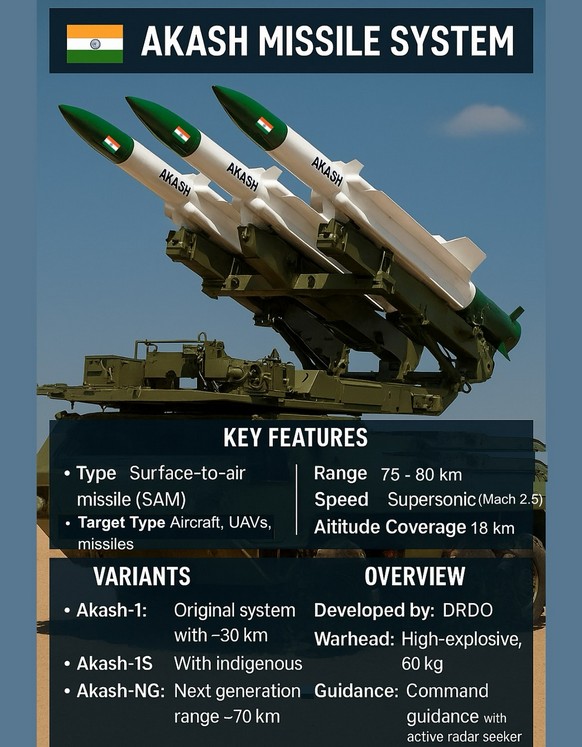Why in the News?
India has pitched for the supply of the Akash missile system to Brazil.

About Akash Missile System:
- Overview: Developed by the Defence Research and Development Organisation (DRDO) and manufactured by Bharat Dynamics Ltd (BDL).
- Type: A short-range Surface-to-Air Missile (SAM) designed to defend against aircraft, UAVs, and helicopters.
- Operational Users: Inducted by both the Indian Army and the Indian Air Force, forming part of India’s layered air defence grid.
- Purpose: Protects vital assets from aerial threats within the short to medium range segment.
- Deployment Mode: Mounted on mobile launchers for rapid positioning, flexibility, and operational agility.
- Comparison: Functionally comparable to Israel’s Iron Dome, though Akash focuses on intercepting larger aerial targets rather than small projectiles.
Key Features:
- Range & Altitude: Effective range 4.5–25 km; altitude coverage 100 m–20 km.
- Engagement Capacity: A single firing unit can engage four targets simultaneously in both autonomous and group modes.
- Speed & Accuracy: Capable of high-speed interceptions with radar-guided precision.
- Propulsion & Dimensions: Length 5.87 m, diameter 350 mm, weight 710 kg; powered by solid-fuel propulsion.
- Automation: Fully automated system ensuring rapid reaction time from detection to neutralization.
- ECCM Capability: Built-in Electronic Counter-Counter Measures (ECCM) to resist enemy jamming
| [UPSC 2023] Consider the following statements:
1. Ballistic missiles are jet-propelled at subsonic speeds throughout their fights, while cruise missiles are rocket-powered only in the initial phase of flight. 2. Agni-V is a medium-range supersonic cruise missile, while BrahMos is a solid-fuelled intercontinental ballistic missile. Which of the statements given above is/are correct? Options: (a) 1 only (b) 2 only (c) Both 1 and 2 (d) Neither 1 nor 2* |
Get an IAS/IPS ranker as your 1: 1 personal mentor for UPSC 2024

